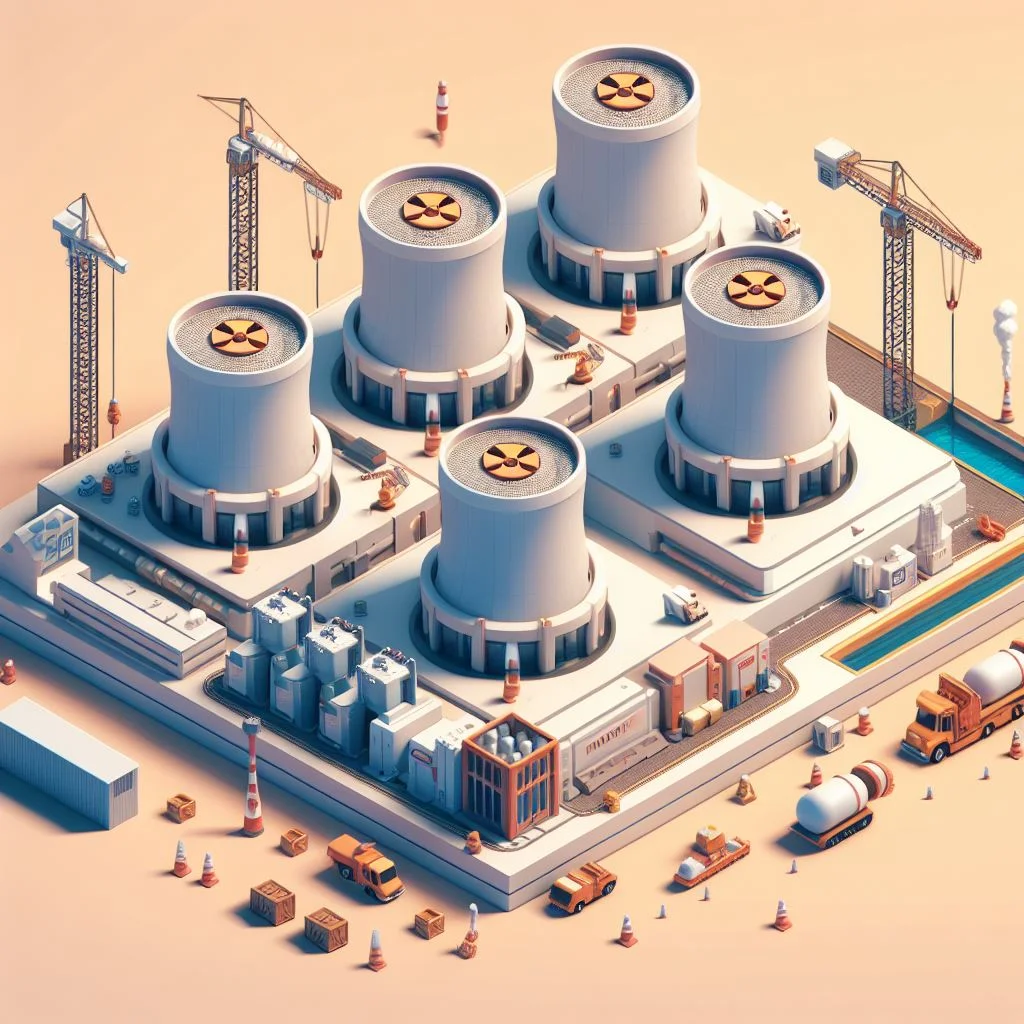The Lamen

India’s nuclear power overhaul
How the country plans to add 20 new nuclear power reactors to its green energy arsenal.
Illustration: Generated with Bing AI
India is pouring billions of dollars — received primarily through pledges from private investors and international alliances — into its nuclear ambitions.
The world’s most populous country and the third-largest emitter of carbon, the country pledged to achieve net zero carbon emissions by 2070 at the 26th United Nations Climate Change Conference.
Part of the national commitment was meeting half of its electricity requirements — about 500 gigawatts — through renewable energy by 2030. To meet these goals, the country plans to “commission a new nuclear reactor every year,” B.C. Pathak, chairman of the state nuclear corporation, told The Hindu.
Context
A series of high-profile nuclear disasters, from Chernobyl in 1986 to Fukushima in 2011, led to widespread anti-nuclear sentiment globally.
- During spring last year, the German government closed down the country’s last three nuclear power plants, despite formidable knowledge and engineering prowess in the sector.
But India’s newfound zeitgeist in nuclear energy production comes at a time when the industry is experiencing renewed trust and favor.
- A Gallup survey found that 55 percent of U.S. adults now support nuclear power generation — a record high since 2012.
- As things stand, India’s currently operational reactors have a capacity of 6.8 gigawatts, accounting for less than 3 percent of its electricity generation.
- But the country looks to add more than 20 new nuclear reactors by 2031, increasing its power capacity nearly threefold to 22.4 gigawatts.
Investments in India’s renewable energy sector rose to a record $14.5 billion between 2021 and 2022, funded primarily through private investors.
- However, these investments would have to double to about $30-40 billion a year through 2030 to meet its climate goals, according to the Institute of Energy Economics and Financial Analysis.
- The government is also partnering with France, the U.S., and Russia to make up for the deficit— installing new nuclear reactor units and collaborating on small modular reactors.
- Mukesh Ambani and Gautam Adani, two of India’s richest men, have pledged a combined $150 billion toward the country’s green goals.
Between the lines
Despite pledges made at conferences, cheap and reliable energy remains the priority for Prime Minister Narendra Modi’s government as it prepares for elections.
- India, along with China and other emerging countries, has defended a complete “phasing out” of coal in climate negotiations — blaming an uneconomic transition.
- The Indian government said on Dec. 11 that it expects to roughly double coal production to 1.5 billion tons by 2030.
- While already having its dirtiest-burning stations run full-throttle during summer, the country is reopening old coal mines and digging out new ones.
India’s primary response to criticism of its policies is that the primary responsibility for action lies more on the U.S. and other developed nations in cutting down their own emissions while aiding budding economies.
- A relatively new addition to major emitters, India accounts for 7 percent of the global carbon emissions — half (14.02 percent) of the U.S. and a quarter (29.18 percent) of China’s share.
- During his speech at COP26, Modi called on wealthier countries to make $1 trillion available in climate financing for developing countries “as soon as today.”
Why it matters
Climate change is an immediate concern for India: a choking smog blankets the national capital and much of northern India each winter, and the country is growing increasingly vulnerable to heat waves and ‘day zero‘.
With India working toward finding a middle ground between cutting emissions and fueling economic growth, the country “will not be able to survive completely without coal.”
Instead, it looks to launch green initiatives that account for its upcoming growth in energy demand without putting extensive amounts of carbon into the world.
The big picture
Advances in nuclear technology and climate laws have firmly placed nuclear power at the center of the renewable energy conversation: Twenty-two countries and over 120 companies have pledged to triple their nuclear energy capacity by 2050.
- China, the world’s biggest carbon emitter, recently unveiled plans to build at least 150 new nuclear reactors over the next 15 years — more than the rest of the world has built in the previous thirty-five.
- The industry now plans to scale with small modular reactors on the order of ten to hundred megawatts that are cheaper and meant to be shipped around the world.
Despite a recent nuclear power breakthrough in the U.S., producing a nuclear fusion reaction resulting in a net energy gain, the world has to rely on nuclear fission and other renewables in the short term.